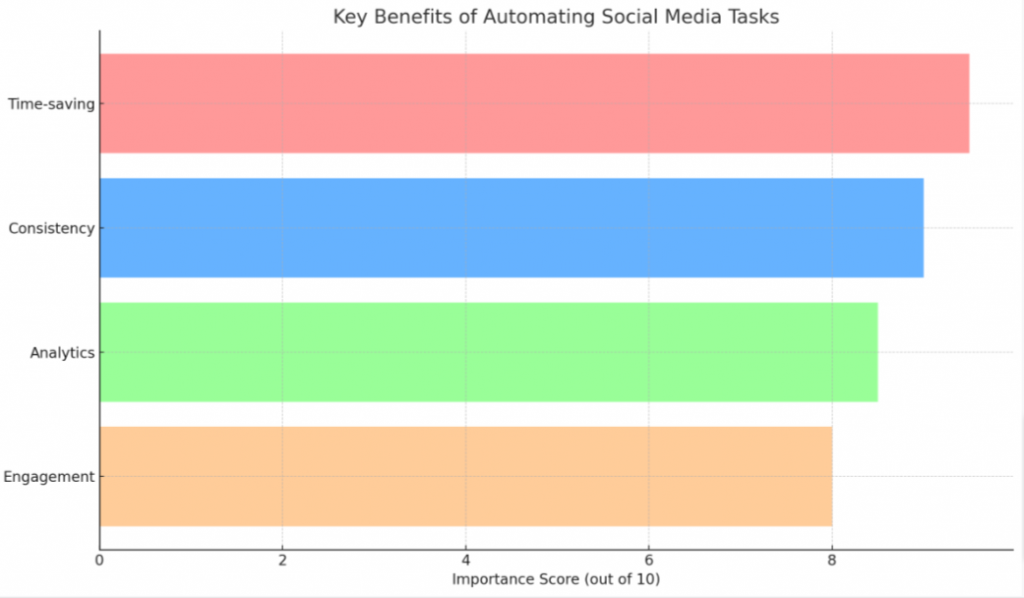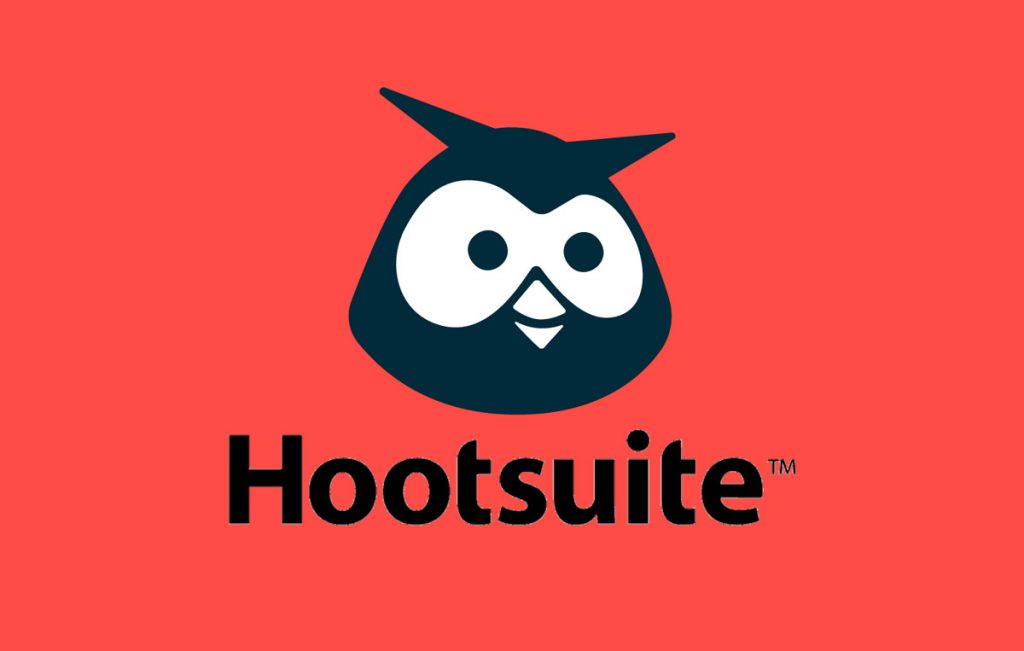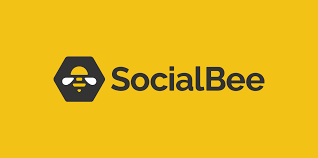Harnessing Automation: Mastering Social Media Tools and Strategies
Introduction
In the digital age, social media platforms have evolved from mere recreational sites to powerful tools for brand promotion, networking, and customer engagement. For businesses, these platforms offer a unique opportunity to connect directly with their audience, foster brand loyalty, and drive sales. However, with the rise of multiple social platforms like Facebook, Twitter, Instagram, LinkedIn, and Pinterest, managing consistent engagement across all channels can be a daunting task.
Think of a brand trying to juggle multiple balls in the air – from creating content that resonates with their audience, to scheduling posts for optimal times, to responding to comments and messages promptly. It’s not just about pushing out content; it’s about doing so with a strategy that’s both efficient and effective. This is where the challenges emerge.
Businesses, especially small to medium enterprises without dedicated social media teams, often find themselves overwhelmed. They may miss posting updates, struggle to track audience engagement, or simply not have the bandwidth to be as responsive as they’d like. Such inconsistencies can lead to a decrease in audience trust and engagement, ultimately affecting a brand’s online reputation.
Enter the world of social media automation – a game-changer in the realm of digital marketing. By leveraging tools and strategies designed to streamline and automate social media tasks, businesses can ensure they’re always present, responsive, and engaging in meaningful ways with their audience.
This article aims to delve into the importance of automating social media, exploring popular tools in the market, and sharing expert tips to maximize efficiency without losing the personal touch that’s so crucial to genuine online interactions. Whether you’re a seasoned marketer or a business owner just dipping your toes into the digital world, this guide promises insights that can elevate your social media game.
The Need for Social Media Automation
The digital landscape is ever-evolving, with platforms continuously updating their algorithms, features, and user interfaces. For businesses aiming to maintain a strong online presence, adapting to these changes while managing daily operations can be overwhelming. Here’s why automating social media tasks has become not just a luxury, but a necessity:

Time-saving: Managing multiple accounts and platforms
Most businesses are active on more than one social media platform to reach a diverse audience. Manually logging into each account, crafting posts, and monitoring engagements can consume significant amounts of time. Automation tools simplify this by providing a centralized dashboard where users can schedule, post, and monitor activity across various platforms, all from a single interface.
Consistency: Keeping a regular posting schedule
One of the keys to building a loyal social media following is consistency. Your audience expects regular updates, and failing to meet these expectations can lead to decreased engagement and even unfollows. Automation tools allow businesses to schedule posts weeks or even months in advance, ensuring that the content is always live, even during holidays or unexpected downtimes.
Analytics: Tracking performance and making informed decisions
Understanding which posts resonate with your audience and which ones don’t is crucial for refining your social media strategy. Manual tracking can be cumbersome and prone to errors. Automation tools, however, provide in-depth analytics, highlighting key performance indicators such as engagement rates, best posting times, and audience demographics. With this data at hand, businesses can make informed decisions, tweaking their strategies for better results.
Engagement: Automated responses to common queries
While automation should never fully replace human interaction, it can certainly assist in handling repetitive tasks. For instance, many businesses receive similar queries multiple times a day. Automated responses, whether through chatbots or preset messages, can provide immediate answers, enhancing user experience. Of course, for more complex issues, a human touch is essential, but for initial interactions or FAQs, automation can be a real boon.
In essence, social media automation is about working smarter, not harder. By leveraging the right tools and strategies, businesses can maintain a robust online presence, engage their audience effectively, and free up time and resources for other essential tasks. The goal isn’t to replace human interaction but to enhance and optimize it, ensuring that every engagement is meaningful and adds value to the user.
Benefits of Social Media Automation
Embracing automation in the realm of social media management comes with a plethora of advantages. Here’s a deep dive into the benefits businesses can reap by incorporating automation into their social media strategy:

Streamlined content scheduling
With an array of content types – from blog posts to videos, infographics to tweets – keeping track of what to post and when can be a logistical challenge. Automation tools come with scheduling features, allowing businesses to plan out their content calendar in advance. This not only ensures a consistent posting schedule but also allows businesses to align their content with specific campaigns, holidays, or events.
Improved audience engagement
The digital audience thrives on real-time interactions. A comment left unanswered or a message ignored can lead to lost opportunities or, worse, disgruntled followers. Automation tools can send out immediate acknowledgments or responses, ensuring that your audience feels heard and valued. Moreover, by automating routine responses, your team can focus on more personalized interactions, fostering deeper connections.
Enhanced team collaboration
Many businesses have multiple individuals or teams managing their social media. Automation tools often come with collaboration features, allowing multiple users to access the dashboard, schedule content, or respond to queries. This ensures a seamless workflow, reduces the chances of overlaps or missed tasks, and ensures that everyone is on the same page regarding the brand’s online strategy.

In-depth analytics and reporting
Knowledge is power, especially in the digital marketing space. By understanding how your audience interacts with your content, which posts garner the most engagement, or what times yield the highest reach, you can tailor your strategy for optimal results. Automation tools offer comprehensive analytics, providing insights that can guide content creation, posting schedules, and engagement strategies. Some tools even offer competitor analysis, allowing businesses to understand how they fare against others in the market.
Effective crisis management through alerts and notifications
In today’s fast-paced digital world, things can escalate quickly. A negative review, a product complaint, or a viral post can snowball into a PR crisis if not addressed promptly. Automation tools can be set up to send alerts for specific keywords or sentiments, ensuring that businesses are always in the loop and can respond swiftly to manage potential issues.
To sum it up, social media automation, when used judiciously, can enhance a brand’s online presence manifold. It ensures consistency, fosters engagement, facilitates collaboration, provides actionable insights, and acts as an early warning system for potential crises. In the competitive digital space, where every like, share, and comment counts, automation emerges as a powerful ally for businesses aiming to make a mark.
Popular Social Media Automation Tools
In a market brimming with tools and software promising to revolutionize your social media management, it’s essential to pick the ones that align with your business needs. Here’s a curated list of popular social media automation tools, each with its unique features, pricing, and pros and cons:
Buffer
- Overview and features: Buffer is a user-friendly platform designed for scheduling, publishing, and analyzing social media posts. With its clean interface, users can easily schedule content across multiple platforms, including Facebook, Twitter, Instagram, Pinterest, and LinkedIn.
- Pricing and plans: Buffer offers a free plan with limited features, suitable for individuals or small businesses. Their premium plans, catering to larger teams or enterprises, come with advanced features and analytics.
- Pros and Cons: Pros: Intuitive interface, easy scheduling, in-depth analytics, and team collaboration features. Cons: Limited features in the free plan, and some users find the analytics dashboard a tad overwhelming.
Hootsuite
- Overview and features: Hootsuite is one of the pioneers in social media management tools, offering a comprehensive suite of features. Users can schedule posts, interact with their audience, and get a holistic view of their social media performance through its dashboard.
- Pricing and plans: While Hootsuite offers a free version, its premium plans unlock features like bulk scheduling, team assignments, and custom analytics reports.
- Pros and Cons: Pros: Supports a wide range of social platforms, offers social listening features, and has robust analytics. Cons: The interface might seem cluttered to some, and the pricing can be on the higher side for advanced features.

Sprout Social
- Overview and features: Sprout Social is known for its powerful analytics and engagement tools. Apart from scheduling and publishing, it provides detailed performance reports and even helps brands with social listening.
- Pricing and plans: Sprout Social doesn’t have a free plan, but its premium plans offer a range of features suitable for both mid-sized businesses and large enterprises.
- Pros and Cons: Pros: Comprehensive analytics, CRM features, and seamless team collaboration tools. Cons: No free plan, and the pricing is relatively higher than some competitors.
SocialBee
- Overview and features: SocialBee offers content categorization, scheduling, and evergreen content recycling. It’s ideal for businesses looking to maintain a balance between new and repeated content.
- Pricing and plans: While not offering a free plan, SocialBee’s pricing is tiered based on features, making it suitable for a range of business sizes.
- Pros and Cons: Pros: Unique content categorization feature, easy to recycle evergreen content, and offers social media audit services. Cons: No native analytics; instead, it integrates with other tools for performance metrics.

Sendible
- Overview and features: Sendible is tailored for agencies managing multiple client accounts. It supports scheduling across various platforms and provides insights to help agencies demonstrate ROI to clients.
- Pricing and plans: Sendible’s plans are crafted with agencies in mind, with features scaling based on the number of users and managed brands.
- Pros and Cons: Pros: Robust reporting tools, CRM features, and a collaborative workflow for teams. Cons: Might be overkill for individual users or small businesses, and some users find the interface less intuitive than competitors.
Choosing the right tool hinges on your business’s specific needs, the platforms you’re active on, and your budget. Whether you’re a solo entrepreneur or a large agency, there’s a tool out there that can streamline your social media management and amplify your online presence.
Tips for Effective Social Media Automation
While automation tools offer a myriad of features to streamline social media management, their efficacy depends largely on how they are utilized. Here are some expert tips to ensure you get the most out of your social media automation efforts:
Plan Ahead
- Content calendars: Creating a content calendar helps you visualize your posting schedule, ensuring a balanced mix of content types. It also aids in aligning your social media strategy with any ongoing marketing campaigns, product launches, or notable events.
- Seasonal campaigns: Every industry has peak seasons or significant dates. By planning ahead, you can automate posts for these occasions, ensuring you tap into the buzz without last-minute hustles.
Prioritize Engagement
- Setting up automated yet personalized responses: While it’s crucial to acknowledge messages or comments promptly, canned responses can come off as impersonal. Aim to strike a balance by personalizing automated responses as much as possible.
- Monitoring and intervening when necessary: Automation should assist human interaction, not replace it. Regularly monitor automated responses to ensure they are appropriate and step in for more personalized interactions when needed.
Use Analytics to Inform Strategy
- Regularly review performance metrics: Tools offer a wealth of data, from engagement rates to audience demographics. Regularly reviewing these metrics can provide insights into what’s working and what’s not, allowing for strategy tweaks.
- Adjusting strategies based on data: If a particular type of post is consistently performing well, consider incorporating more of it. Conversely, if something isn’t resonating, it might be time for a change.

Diversify Content
- Mixing automated and real-time posts: While it’s convenient to schedule posts in advance, spontaneous real-time posts add authenticity to your online presence. Ensure a mix to keep your feed fresh and engaging.
- Avoiding over-automation: Reliance solely on automation can make your feed seem robotic. Regularly intersperse automated content with real-time updates, behind-the-scenes snippets, or live sessions.
Test and Optimize
- A/B testing for posts and campaigns: Just like any other digital marketing strategy, A/B testing can be invaluable for social media. Test different headlines, images, or posting times to see what garners the best engagement.
- Regularly updating automation settings: As your business grows and evolves, so should your automation strategy. Regularly review and update your automation settings to align with your current goals and audience preferences.
In essence, while automation tools are powerful, their true potential is unlocked when coupled with thoughtful strategies. Remember, the goal is to enhance engagement and efficiency, not to disengage from your audience. By keeping these tips in mind, you can ensure that your social media automation efforts strike the right balance between efficiency and authenticity.
Common Pitfalls and How to Avoid Them
As with any tool or strategy, there’s a right way and a wrong way to approach social media automation. Let’s delve into some common pitfalls businesses might encounter and how to sidestep them:
Over-automation
- Risks of appearing inauthentic: Over-relying on automation can make your brand appear disconnected and robotic. Your audience values genuine interaction, and a feed that’s too polished or repetitive can deter engagement.
- Strategies for balancing automation with genuine engagement: Intersperse scheduled content with real-time posts. Allocate time each day or week for live interactions, whether it’s going live on Instagram, hosting a Twitter Q&A, or sharing spontaneous behind-the-scenes content.
Ignoring Negative Feedback
- Importance of monitoring and addressing negative comments: Negative feedback, if left unaddressed, can escalate and harm your brand’s reputation. Moreover, how you handle criticism can either win back a disgruntled customer or further alienate them.
- Setting up alerts for specific keywords or sentiments: Use your automation tool to set up alerts for specific keywords or negative sentiments. This ensures that you’re promptly notified of any negative feedback and can address it in real-time.
Relying Solely on Automation
- The need for human touch in social media: Social media is about building connections. While automation can handle repetitive tasks, genuine relationship-building requires a human touch.
- Integrating automation with real-time management: Use automation to handle routine tasks, but ensure you or your team are also actively involved in real-time interactions. This could be in the form of responding to comments, engaging with other brands or influencers, or simply sharing spontaneous content that resonates with your brand’s ethos.
In conclusion, while social media automation offers numerous advantages, it’s essential to approach it judiciously. By being aware of these common pitfalls and actively working to avoid them, businesses can ensure that their automation efforts enhance their online presence rather than hinder it. Remember, the ultimate goal is to foster genuine connections and provide value to your audience. With the right balance, automation can be a powerful tool in achieving this.
Future Trends in Social Media Automation
As technology evolves, so do the tools and strategies surrounding social media automation. Staying ahead of the curve ensures that businesses can leverage the latest features for optimal engagement and efficiency. Here’s a glimpse into the future trends poised to shape the realm of social media automation:
Integration of AI and Machine Learning
- Predictive analytics: Advanced AI algorithms can analyze past performance data to predict future trends. This means businesses could receive suggestions on the best times to post, potential viral content, and more, all powered by AI.
- Personalized content recommendations: Machine learning can analyze user engagement and behavior to suggest content types or topics that are likely to resonate with the audience. This ensures a more tailored and effective content strategy.
Enhanced Chatbots and Virtual Assistants
- Natural language processing: The chatbots of the future will be adept at understanding and processing natural human language, making automated interactions feel more genuine and intuitive.
- Real-time customer support: Advanced chatbots will be capable of handling more complex queries, offering real-time solutions and reducing the need for human intervention, thus improving response times and customer satisfaction.
Augmented Reality (AR) and Virtual Reality (VR) in Social Media
- Immersive brand experiences: Brands will be able to create AR or VR-based social media content, offering users an immersive experience. Imagine virtual store tours, product try-ons, or interactive ads that users can engage with in a 3D space.
- Potential for automated AR/VR content: As the technology becomes more mainstream, there might be tools that allow for the automation of AR or VR content creation and posting, making it easier for brands to incorporate these technologies into their social media strategies.
The world of social media automation is dynamic, with innovations continuously reshaping the landscape. By staying informed and being open to adopting new trends and technologies, businesses can ensure they remain at the forefront of digital engagement, offering their audience an unparalleled experience.
The future promises a blend of authenticity and automation, where brands can engage in meaningful ways while leveraging the power of cutting-edge technology.
Conclusion
The digital age has brought about a seismic shift in the way businesses engage with their audience. Social media platforms, once regarded as mere recreational spaces, have morphed into powerful arenas for branding, networking, and customer interaction. As these platforms proliferate and evolve, the challenge for businesses is to maintain consistent, genuine, and impactful engagement across the board. This is where the magic of social media automation comes into play.
From scheduling posts to ensuring regular engagement, from analyzing performance metrics to preempting PR crises, automation tools have proven to be invaluable allies for businesses navigating the intricate maze of social media.
However, as with any tool, its efficacy is determined not just by its features, but by how judiciously it’s employed. The key is to strike a balance, ensuring that while routine tasks are automated, the essence of social media – genuine human interaction – isn’t lost in the shuffle.
As we look to the future, the realm of social media automation promises exciting innovations. From AI-driven predictive analytics to immersive AR and VR experiences, the horizon is brimming with possibilities. For businesses, the challenge and opportunity lie in harnessing these innovations to offer their audience an engagement experience that’s both efficient and authentic.
In closing, automating social media is not about replacing the human touch with algorithms and bots. Instead, it’s about amplifying the human touch, ensuring that every interaction, be it automated or real-time, adds tangible value to the user. In the ever-evolving world of digital engagement, this balance between efficiency and authenticity is the golden key to building lasting, meaningful connections.
References and Further Reading
- Pew Research Center (2021). Social Media Use in 2021. A comprehensive study that provides insights into the demographics of social media users and usage trends across different platforms.
- Smith, K. (2022). The Rise of Social Media Automation. This book offers an in-depth look into the evolution of social media tools, with case studies illustrating how businesses have leveraged automation for success.
- Buffer Blog (2022). How We Use Buffer to Manage Our Social Media. A practical guide that delves into the intricacies of using Buffer for social media management, complete with tips and tricks.
- Hootsuite Academy (2021). Mastering Social Media Management. An online course that covers the fundamentals of social media management, including the effective use of automation tools.
- TechCrunch (2023). The Future of Social Media: AI and Beyond. An article that explores the potential integrations of AI in social media platforms and tools.
- Forbes (2022). Why Augmented Reality is the Next Big Thing in Social Media. This piece discusses the potential of AR in reshaping social media interactions and brand engagements.
- Sendible Insights (2023). Making the Most of Your Social Media Strategy with Sendible. A blog post that provides a detailed walkthrough of Sendible’s features, along with best practices.
- Chaffey, D. (2022). Digital Marketing: Strategy, Implementation, and Practice. This book covers a wide range of digital marketing topics, including an extensive section on social media automation.
By exploring these references and resources, readers can gain a deeper understanding of the nuances of social media automation, stay updated with the latest trends, and equip themselves with the knowledge to implement effective strategies tailored to their unique business needs.

